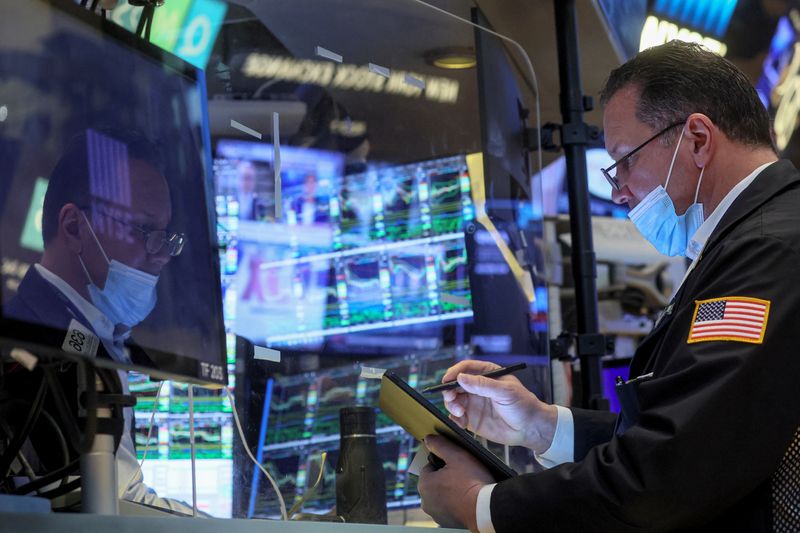The ASX will fall further today, with ASX 200 futures trading 90 points lower, down 1.28% as of 8:20 am AEST.
Yesterday, the ASX200 finished 90 points (-1.24%) lower at 7163, dragged down by Consumer Discretionary (-1.91%), Materials (-1.86%) and Financial (-1.45%) sectors. On the flipside, Utilities (-0.27%) and IT (+0.13%) outperformed.
IG Markets analyst Tony Sycamore noted several factors affecting markets.
“Wednesday’s China-inspired sell-off deepened yesterday as bond markets and higher yields rudely reclaimed the spotlight. In the US, the yield on the benchmark 10-year bond rose above 3.90% for the first time in four months – a move replicated locally as the yield on the Australian 10-year bond surged 10bp to 4.11%, its highest level since October.
“Falls in the interest-rate sensitive ASX200 Financial sector weighed heavily. NAB fell 2.11% to $25.96, ANZ fell 1.92% to $23.53, Macquarie fell 1.76% to $174.55, Westpac fell 1.72% to $21.15, and CBA fell 1.33% to $100.43.
“Following the overnight sell-off on Wall Street, the ASX200 is on track for a test of the bottom of its three-month trend channel, currently at 7050ish. Whether the ASX200 can stay above it (closing basis) will be the difference between further range trading in the weeks ahead or a test of year-to-date lows at 6900.”
Speaking of Wall St, the S&P500 is at risk of losing its July gains, threatened by the rally in yields and the possibility of a double top at 4500ish in the S&P500 and 15,285 in the Nasdaq.
Sycamore says, “After doing their best to ignore rising yields in recent weeks, US equity markets were left with nowhere to run last night as robust labour market data saw Treasury yields burst another 5-11bp higher across the curve.”
Further moving the markets was the ADP (NASDAQ:ADP) employment report which surged by 497,000 in June against the 225,000 expected. Continuing jobless claims rose by 1,720,000, the lowest in four months. Initial jobless claims rose by 248,000, well below a peak of 265,000 three weeks ago. Jobless claims fell by 496,000 to 9.824 million, below forecasts for a rise of 9.9 million but still well above pre-pandemic levels.
“Attention turns to tonight’s all-important Non-Farm payrolls release. The market is looking for payrolls to rise by 230,000 in June, easing from 339,000 in May. The unemployment rate is expected to fall to 3.6% from 3.7% in May. Average hourly earnings are expected to rise by 0.3% in June, allowing the annual rate to ease to 4.2% from 4.3%. If, any or more importantly, all readings are stronger than expected, it will likely ensure a very ugly end to the week for US stock markets,” Sycamore said.
What happened overnight?
Here’s what we saw (source Commsec):
US markets
Fell for a second day in a row amid a spike in US government bond yields after surprisingly strong US private sector hiring data from payroll processing firm ADP.
US companies added the most jobs in over a year in June, while other data showed the US services sector expanded in June at the fastest pace in four months. The figures fanned fears the US central bank will be aggressive in raising interest rates.
In company news, shares of oil major Exxon Mobil (NYSE:XOM) fell by 3.7% after forecasting a US$4 billion hit to earnings, while shares of some of the year’s best performers including chipmaker Nvidia and electric vehicle maker Tesla (NASDAQ:TSLA) slid by up to 2.1%. Shares of Moderna shed 4.3% after the pharma company announced a deal to develop mRNA drugs in China, despite rising Sino-US tensions.
At the close of trade, the Dow Jones index fell by 366 points or 1.1%. The S&P 500 index dipped by 0.8% and the Nasdaq index shed 113 points or 0.8%.
European markets
Slumped to 14-week lows on Thursday on global interest rate hike jitters after the release of robust US jobs data. Rate-sensitive real estate shares led losses with a 4.2% drop. Shares of gaming group Embracer fell by 13.8% after it raised US$182 million in a share issue directed to institutional investors. German factory orders rose by 6.4% in May (survey: +1%). The continent-wide FTSEurofirst 300 index fell by 2.3%. And the UK FTSE 100 index shed 2.2%, after hitting its lowest intraday level since March 20.
Currencies
Currencies were weaker against the US dollar in European and US trade.
- The Euro fell from US$1.0899 to US$1.0834 and was near US$1.0890 at the US close.
- The Aussie dollar dipped from US66.87 cents to US65.99 cents and was near US66.25 cents at the US close.
- The Japanese yen eased from 143.56 yen per US dollar to JPY144.64 and was near JPY144.05 at the US close.
Global oil prices were flat on Thursday as traders weighed tighter US crude supplies with the higher likelihood of a US rate hike that could dent energy demand. Crude inventories fell by 1.5 million barrels last week to 452.2 million barrels (survey: -1.0 million barrels).
- Brent crude price fell by US13 cents or 0.2% to US$76.52 a barrel.
- The US Nymex crude price added just US1 cent or less than 0.1% to US$71.80 a barrel.
- The copper futures price slid 0.9%, under pressure from a weak global economic growth outlook and tepid demand in top consumer China.
- The aluminium futures price dipped 0.8%.
- The gold futures price fell by US$11.70 or 0.6% to US$1,915.40 an ounce. Spot gold was trading near US$1,910 an ounce at the US close.
- Iron ore futures rose by US43 cents or 0.4% to US$112.27 a tonne on optimism about additional policy stimulus to support China's sputtering post-Covid economic rebound.
The S&P/ASX Small Ordinaries closed at 2,805.9 yesterday, down 1.27% yesterday.
Making news this morning, which you can read more about throughout the day with Proactive are:
